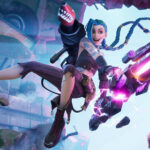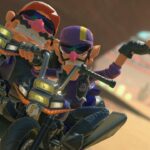And just like that, a new Steam Deck is here. We’ve been expecting a refresh of Valve’s handheld gaming PC for a little while now, and it’s touting this Steam Deck OLED as “the definitive first generation Steam Deck, it’s the one that we would have shipped if we could have.”
The new Steam Deck OLED comes in a few flavours, most obviously the $549 512GB and $649 1TB trims. That’s largely the same price the original 256GB and 512GB LCD versions retailed for just a few days ago, except now you’re getting an OLED screen and twice the storage capacity for your dollar. And with the 1TB version you get a funky new dual-use case with a Velcro-attached inner shell for those times you just want a thin case to drop in a bag.
Valve is going to keep selling (and supporting) the 256GB Steam Deck LCD version as the low-end option, cutting the price to $399, and discounting the 64GB and original 512GB Decks while dwindling stocks last.
We’ve had our hands on the new machine for a couple weeks now, and Tyler’s review will tell you what you need to know about what the OLED screen is like and what a difference that can make to your gaming experience. But it’s not just about that vibrant HDR panel, Valve has taken the opportunity to improve almost every aspect of the device.
(Image credit: Future)
APU: AMD Sephiroth
Lithography: TSMC 6nm
CPU: Zen 2
Cores: 4
Threads: 8
GPU: RDNA 2
Compute units: 8
TDP: 4 – 15W
Memory: 16GB LPDDR5-6400
Storage: 512GB | 1TB NVMe SSD
Screen: 7.4-inch OLED
Peak luminance: 1,000cd/m² (HDR) | 600cd/m² (SDR)
Native resolution: 1280 x 800
Refresh rate: 90Hz
Network: Tri-band WiFi 6E, BT 5.3
Battery: 50Whr
Price: $549 | $649
The most obvious thing is that 1280 x 800 OLED panel. It’s capable of peak luminance up to 1,000cd/m² when playing HDR content and a not-inconsiderable 600cd/m² when playing boring ol’ SDR stuff. It’s bright, punchy, and makes games like Baldur’s Gate 3 and Cyberpunk 2077—games with excellent HDR implementations—really sing.
But the screen has had a potentially bigger impact on the rest of the device than you might think.
“It sounds crazy, but we have a bigger battery, substantially better display, but the device is actually lighter,” Valve’s Yazan Aldehayyat tells me. “Now it’s about 30g lighter, which, if you’re playing for, you know, an hour plus, it makes a difference. It’s a lot more comfortable to use.
“The OLED display was one of the reasons why we’re able to do that. We have made improvements to the thermal module. Because the OLED display is thinner, we just have a little more space to get a slightly bigger fan, slightly better heat pipe and heat exchanger. And we made several tweaks to the thermal module so that the device runs cooler now. And the fact that actually, because there’s no kind of backlight where the heat is concentrated on the display, it’s a lot cooler to the touch, more comfortable to use, and all that kind of stuff.”
(Image credit: Future)
(Image credit: Future)
(Image credit: Future)
(Image credit: Future)
(Image credit: Future)
And it’s made a big difference to my own experience with the new Steam Deck. When I started testing the original LCD version in February last year it was hot and loud. Now we’re some 300 software updates in and it’s calmed down a bit, but the OLED version is still noticeably quieter. It’s also longer-lasting, too, thanks to that bigger battery.
There is no game performance upgrade, however, as Valve is keen to point out. “So it’s the same performance target,” says Lawrence Yang. “It’ll play all the same games that the Steam Deck LCD can. And for developers, they don’t have a new target to hit or worry about, they don’t have to worry about a different verification process.”
But the Steam Deck OLED does have a new AMD-designed APU inside it. The new Sephiroth APU is a 6nm die shrink of the original 7nm Aerith APU, which means you are getting some small efficiency gains from the silicon inside the new Deck, too. It will only be used in the OLED version, however, so while Valve is going to continue selling the $399 256GB Steam Deck LCD for the foreseeable it will still be with the original hardware inside it.
With the launch of this new definitive Steam Deck, Valve is cutting the pricing of its existing models, while stocks last. The 64GB model will now be $349 and the old 512GB LCD Deck will now be $449. Those two models will slowly fade away, however, as supply inevitably dwindles.
(Image credit: Valve)
(Image credit: Future)
Steam Deck review: Our verdict on Valve’s handheld.
Best Steam Deck accessories: Get decked out.
Steam Deck battery life: What’s the real battery life?
Best handheld gaming PC: What the best travel buddy?
There’s also a special limited edition Steam Deck OLED at $679 for those in the US and Canada—because Valve hates me and my British ways—which is another $30 more than the standard 1TB version, but comes with the same capacity and has a translucent case with red accents around the thumbsticks, vents, and new torx screws.
I’m also told that, while it is a limited edition, it’s also a bit of an experiment. “It’s something that we’re interested in continuing to do in the future with different colourways and things like that,” says Aldehayyat.
“Can we do this? And can it work out?” continues Yang. “We’ll find out later this month when we see if people are interested in it. And if people want it. And if they do, then we’ll keep doing it.”
The first of the new models will go on sale November 16th, but you can check out our full Steam Deck OLED review for the full low-down on Valve’s new handheld right now.











